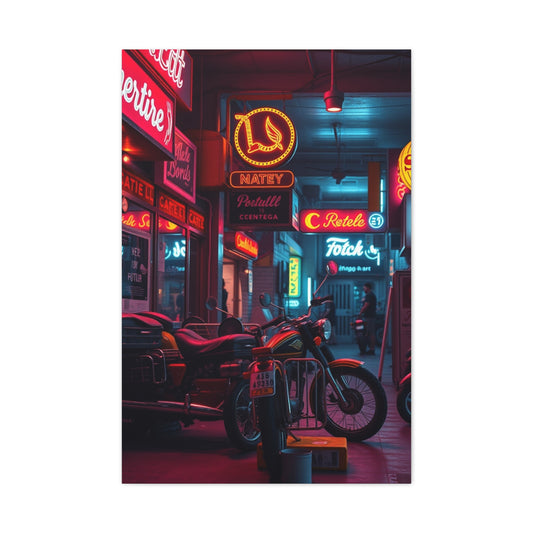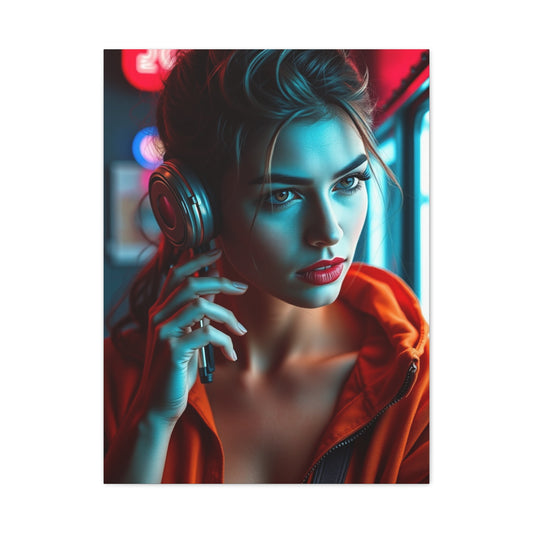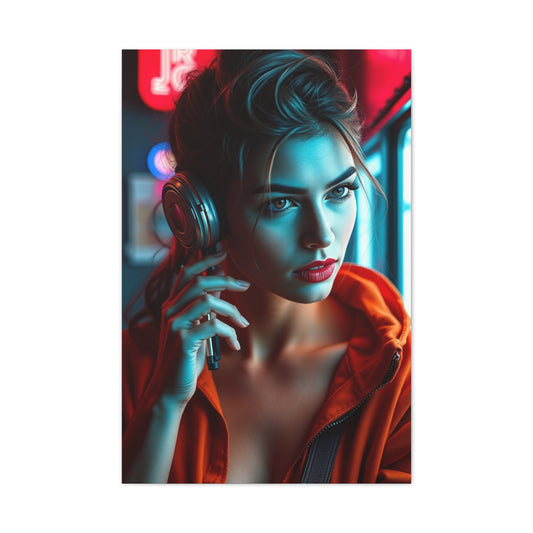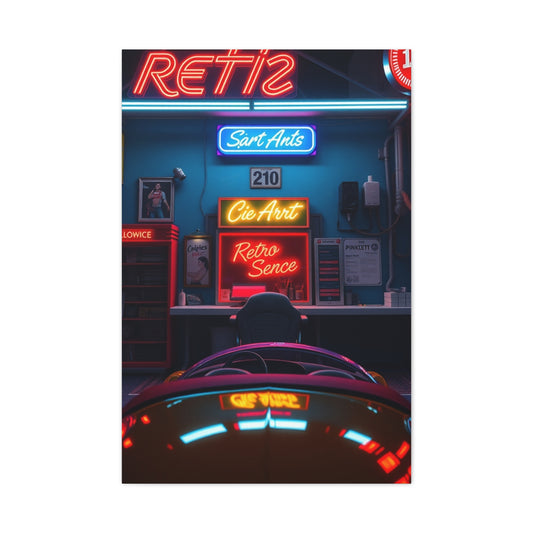Spring is a season of transformation, renewal, and rejuvenation. It is a time when nature awakens, offering photographers a wealth of vibrant colours, dynamic landscapes, and unique lighting opportunities. Capturing the essence of spring requires an understanding of its visual characteristics, including the quality of light, the presence of new foliage, and the activity of wildlife. Each element can be used to create images that are not only technically sound but also evocative and emotionally resonant.
One of the first steps in spring photography is careful observation. Unlike summer or autumn, where colours and light are relatively predictable, spring is a transitional season, and nature changes rapidly. Buds bloom, leaves unfurl, and flowers emerge in a matter of days. Wildlife becomes more active as animals forage, mate, and care for their young. Observing these subtle shifts allows photographers to anticipate the best moments for capturing unique images. Visiting the same location repeatedly can provide insights into how light, weather, and subjects change over time, helping photographers capture fleeting moments that are both beautiful and authentic.
Light is one of the most important aspects of spring photography. Early mornings and late afternoons, commonly referred to as the golden hours, provide soft, diffused lighting that enhances the delicate colours of new leaves and blooms. This light creates gentle shadows, adding depth and dimension without harsh contrasts. Misty mornings and light fog often occur in spring, producing an ethereal, atmospheric quality in photographs. Learning to work with these conditions allows photographers to create images that feel fresh, serene, and reflective of the season’s sense of renewal.
During midday, the sunlight is often harsher, and shadows can become stark. In these conditions, photographers can seek shaded areas, use natural reflectors like light-colored walls or surfaces, or incorporate diffusers to soften the light. Understanding how to manipulate or adapt to the available light is crucial for achieving images that are visually pleasing and emotionally engaging.
Spring offers a palette of vibrant greens, pastel blooms, and the occasional bright pop of colour from flowering trees or wildflowers. To capture this richness effectively, photographers should pay attention to colour harmony, contrast, and balance within the frame. Combining complementary colours can create striking visuals, while juxtaposing bright blossoms against muted backgrounds can emphasize the subject and provide a sense of depth.
Composition plays a critical role in spring photography. Leading lines, such as winding garden paths, rivers, or rows of trees, can guide the viewer’s eye through the frame. Layering elements in the foreground, middle ground, and background enhances depth and provides a more immersive viewing experience. Framing subjects using natural elements like arching branches, clusters of flowers, or reflective puddles can add visual interest and emphasize the essence of the season.
Spring is an ideal time for macro and close-up photography. The emergence of dew, blossoms, and delicate foliage provides countless opportunities for capturing intricate details. Macro lenses allow photographers to isolate subjects, highlighting textures, patterns, and subtle nuances that may be overlooked in wider compositions. Whether focusing on the fine veins of a leaf, the sparkling surface of a water droplet, or the vibrant petals of a flower, close-up photography emphasizes the intimate beauty of spring.
Depth of field is particularly important in macro photography. Using a shallow depth of field isolates the subject and produces a soft, dreamy background that enhances the focus on the main element. Conversely, a deeper depth of field can retain more of the surrounding environment, providing context and a sense of place. Balancing depth of field according to the subject and desired effect is essential for producing impactful images.
Spring weather is often unpredictable, with sudden rain showers, gusts of wind, or fluctuating temperatures. While these conditions can present challenges, they also offer creative opportunities. Rain can enhance reflections in puddles, intensify colours, and create moodier compositions. Wind can introduce motion into flower petals or foliage, adding a dynamic element to otherwise static scenes. Photographers must be prepared to protect their equipment, using rain covers, lens hoods, or waterproof bags, while also embracing these conditions to capture unique and compelling images.
Cloudy or overcast days are particularly advantageous for portrait photography, as the diffuse light softens skin tones and reduces harsh shadows. Similarly, fog and mist can add depth, atmosphere, and a sense of mystery, transforming familiar landscapes into ethereal scenes. By embracing the natural variability of spring weather, photographers can capture images that are both technically proficient and visually captivating.
Spring marks the resurgence of wildlife activity. Birds, mammals, and insects become more active, providing abundant opportunities for nature and wildlife photography. Nesting birds, for example, offer chances to photograph behavior and interaction, while insects pollinating flowers can serve as fascinating macro subjects. Patience and observation are key, as capturing wildlife often requires waiting for the right moment when lighting, composition, and subject behavior align.
Telephoto lenses are invaluable for photographing wildlife without disturbing the animals. By maintaining distance, photographers can capture natural, authentic behaviors while minimizing stress on the subjects. In addition, combining telephoto photography with a careful understanding of composition and background allows for striking, well-balanced images that showcase the vitality of spring.
Camera settings must be adapted to the specific conditions of spring. Exposure can be tricky due to bright skies, reflective surfaces, or high-contrast scenes created by sunlight filtering through new foliage. Photographers may need to adjust ISO, aperture, or shutter speed to maintain proper exposure. Bracketing exposures and later blending them in post-processing can also be effective for handling challenging lighting conditions.
White balance adjustments are crucial for accurate color representation, particularly when shooting in mixed lighting conditions such as shaded areas under trees or direct sunlight on blossoms. Using custom white balance or post-processing adjustments ensures that the soft greens, pastels, and vibrant hues of spring are rendered faithfully.
Polarising filters are another useful tool in spring photography. They reduce glare from wet surfaces, deepen blue skies, and enhance the saturation of foliage and flowers. Filters can also help control reflections in puddles or leaves, allowing photographers to achieve more visually pleasing results.
Spring photography encourages experimentation. Changing perspectives, framing through natural elements, and incorporating reflections or shadows can create unique and compelling images. Low angles allow photographers to capture the freshness of emerging blooms from the perspective of the ground, while high vantage points offer sweeping views of meadows, forests, or orchards in bloom.
Experimenting with motion blur, especially in windy conditions, can convey energy and dynamism. Alternatively, freezing movement with fast shutter speeds captures delicate moments in crisp detail. Photographers are encouraged to explore different approaches, combining technical precision with creative vision to produce images that evoke the essence of spring.
Post-processing completes the photographic workflow and allows photographers to enhance the natural beauty of spring. Adjustments to contrast, vibrancy, and clarity can emphasize the textures and colours of foliage and blossoms. Subtle selective sharpening can bring attention to specific elements, while gradient adjustments and masking can enhance the interplay of light and shadow. Maintaining a natural look is essential, as the charm of spring often lies in its softness and freshness rather than exaggerated or artificial effects.
Through careful post-processing, photographers can highlight the delicacy, freshness, and vitality of spring. Enhancing the golden tones of sunrise or sunset, increasing the saturation of flowers while keeping greens balanced, and adding subtle atmospheric effects like haze or glow can transform ordinary spring scenes into captivating works of art.
Spring is a season full of potential for photographers, offering vibrant colours, dynamic light, and diverse subjects. Capturing its essence requires a combination of observation, technical skill, creativity, and patience. By understanding seasonal changes, working with natural light, experimenting with composition and perspective, and adapting to weather and wildlife, photographers can create images that are both visually compelling and emotionally resonant. Macro details, wildlife activity, and careful attention to technical settings further enrich the photographic possibilities of spring.
Ultimately, spring photography is about conveying the energy, freshness, and renewal of the season. Thoughtful post-processing enhances this vision, ensuring that the images evoke the charm and vitality of nature as it awakens. By embracing the opportunities and challenges that spring presents, photographers can produce stunning, timeless images that celebrate life, growth, and the beauty of the natural world.
Summer Photography: Mastering Light, Colour, and Dynamic Landscapes
Summer is a season that offers both extraordinary opportunities and unique challenges for photographers. The long days, vibrant colours, and abundance of outdoor activities make it a prime time for capturing diverse scenes, from sunlit landscapes to dynamic action shots. However, the intensity of sunlight, harsh shadows, and increased heat require careful planning and technical adjustments to ensure images are well-exposed, visually engaging, and representative of the season’s energy. Mastering summer photography involves understanding light, composition, colour, and equipment considerations, as well as adapting creatively to the unique conditions that define this vibrant season.
One of the defining features of summer photography is the quality and intensity of light. Unlike spring, where mornings and evenings often produce soft, diffused illumination, summer sunlight can be strong, direct, and relentless, particularly during midday hours. This light creates high-contrast scenes, deep shadows, and potential overexposure, which can challenge photographers attempting to capture detail in both highlights and shadows. To mitigate these issues, shooting during the early morning or late afternoon remains ideal. During these golden hours, the sunlight is warmer and softer, casting long, gentle shadows that enhance depth and texture in landscapes, portraits, and still-life subjects.
For those compelled to photograph in the brighter hours of midday, using natural shade or creating shade with portable reflectors can soften shadows and balance exposure. Positioning subjects under trees, overhangs, or architectural structures provides relief from harsh lighting while introducing interesting contrasts between illuminated and shaded areas. Additionally, polarising filters are especially useful in summer photography, as they reduce glare from water surfaces, enhance sky contrast, and saturate foliage and other colours. By controlling reflections and deepening blue skies, polarising filters help produce more visually dynamic and pleasing images, particularly for landscapes featuring water bodies, beaches, or lakes.
Summer also presents a rich palette of colours, ranging from lush greens in forests and fields to the vivid hues of flowers, fruit, and foliage. Capturing these colours accurately requires careful attention to white balance and exposure. Digital cameras often need manual adjustments to white balance to avoid overly warm or cool tones caused by intense sunlight. Shooting in RAW format provides additional flexibility, allowing photographers to fine-tune colour, contrast, and saturation during post-processing without compromising image quality. Colour management is particularly important when photographing vibrant subjects such as flower fields, gardens, or tropical landscapes, where oversaturation or misrepresentation of hues can reduce the authenticity of the final image.
Composition is another critical consideration during summer photography. The abundance of visual elements, from dense foliage to crowded beaches or bustling city streets, requires intentional framing and focus. Leading lines, such as pathways, rivers, or coastlines, can guide the viewer’s eye through the frame, creating depth and visual interest. Layering elements in the foreground, middle ground, and background helps organize complex scenes and emphasizes the scale and context of the subject. Wide-angle lenses are particularly useful in summer landscapes, as they allow for expansive views that capture both the vibrancy of the environment and the drama of sunlight and shadow interplay.
Summer is also a season that invites dynamic photography. Outdoor sports, wildlife activity, and human interactions provide opportunities to capture movement, energy, and spontaneity. When photographing fast-moving subjects, shutter speed becomes critical. A fast shutter speed freezes action, preserving sharpness and detail in subjects such as athletes, birds in flight, or children playing. Conversely, intentionally slower shutter speeds can introduce motion blur, conveying energy and dynamism in the scene. Tripods, monopods, and image stabilization features are helpful tools when experimenting with these techniques, ensuring camera stability while allowing creative control over motion effects.
Managing exposure during summer is a frequent technical challenge. The bright sunlight often results in high-contrast scenes where highlights may be blown out and shadows underexposed. Graduated neutral density filters can be used to balance exposure between bright skies and darker foregrounds, while exposure bracketing allows for capturing multiple images at different settings for later blending. Careful metering and understanding the histogram are essential for preserving detail in both light and dark areas, particularly when photographing beach landscapes, sunlit mountains, or reflective water surfaces.
Summer also encourages experimentation with creative lighting effects. Backlighting, where the sun is positioned behind the subject, can create dramatic silhouettes or halo effects, adding visual intrigue and emphasizing shapes and outlines. Shooting with lens flare intentionally incorporated can evoke warmth and atmosphere, though care must be taken to control flare intensity and prevent loss of contrast. Reflectors and diffusers are valuable tools in portrait photography, softening harsh sunlight and filling shadows to produce balanced, flattering images while retaining the vibrancy and warmth characteristic of summer.
Water photography is particularly rewarding in summer, as lakes, rivers, beaches, and fountains provide abundant opportunities for reflections, motion, and dynamic compositions. Long exposure techniques can smooth water surfaces, creating ethereal, dreamlike effects, while fast shutter speeds freeze splashing waves or rippling patterns. Polarising filters enhance reflections and colours, reducing glare on water surfaces while deepening blues and greens in the surrounding environment. Whether capturing serene landscapes or action-filled coastal scenes, understanding the interaction between light, water, and motion is key to successful summer photography.
Summer also allows for experimentation with macro and close-up photography. Flowering plants, insects, and textures such as tree bark, sand, or stone surfaces provide intricate details that can be captured up close. Macro lenses or telephoto lenses with good minimum focusing distance are ideal for isolating subjects and highlighting fine textures. Depth of field control is essential, as a shallow depth of field isolates the subject against a blurred background, creating emphasis and a sense of intimacy. Conversely, a larger depth of field can incorporate more context, which is useful when photographing flowers in the landscape or wildlife in its natural environment.
Weather and atmospheric conditions in summer can vary from bright, clear skies to sudden thunderstorms. Cloudy skies, while less intense in colour, offer soft, diffused light that can enhance portrait photography and reduce harsh shadows. Stormy or overcast conditions can introduce dramatic skies, adding mood and visual interest to landscapes. Observing and anticipating these conditions allows photographers to plan shoots that capitalize on unique lighting and atmospheric opportunities, producing images that convey the energy and unpredictability of summer.
Human activity also provides a rich subject matter during the summer. Festivals, outdoor markets, family gatherings, and recreational activities offer opportunities for candid photography and storytelling. Capturing people interacting with the environment adds narrative depth, showing how humans engage with and experience the vibrancy of the season. Street photography techniques, including attention to light, composition, and timing, allow for dynamic captures that reflect both the culture and energy of summer life.
Post-processing plays a vital role in enhancing summer images. Adjustments to exposure, contrast, and colour balance can help tame overly bright scenes while highlighting the season’s vibrancy. Increasing saturation slightly, boosting highlights, and selectively sharpening details can accentuate textures, foliage, and flower colours without creating an artificial appearance. Gradient adjustments can balance sky and land exposure, while careful attention to shadows and highlights preserves detail and enhances the three-dimensionality of the scene. Subtle colour grading can evoke warmth and reinforce the summery mood, creating images that feel bright, energetic, and inviting.
Summer photography also benefits from experimentation with perspectives and framing. Low angles can emphasize foreground elements, such as wildflowers, sand patterns, or reflective water surfaces, while high vantage points offer sweeping views of landscapes, cityscapes, or coastlines. Tilting the camera or using unusual viewpoints can add dynamism and creativity, encouraging photographers to see familiar locations in fresh and compelling ways.
Summer photography is defined by its abundance of light, colour, and dynamic subjects. Success requires balancing technical precision with creative exploration, understanding how to manage intense sunlight, high contrast, and vibrant colours, and adapting to rapidly changing conditions. By mastering exposure, composition, lighting, and motion, photographers can produce visually striking images that capture the energy, warmth, and vibrancy of summer. From macro details of flowers and insects to expansive landscapes and dynamic action shots, the season provides endless opportunities for experimentation and artistic expression. Post-processing further enhances the natural beauty of summer, allowing photographers to emphasize colour, depth, and atmosphere while maintaining authenticity. By embracing the challenges and possibilities of the season, photographers can create captivating, evocative, and memorable images that reflect the spirit and essence of summer.
Autumn Photography: Capturing Rich Colours, Warm Light, and Seasonal Atmosphere
Autumn is a season celebrated by photographers for its vibrant colours, dramatic light, and evocative atmosphere. The transition from summer to winter brings a palette of reds, oranges, yellows, and browns, creating striking landscapes and compelling compositional opportunities. The lower angle of the sun, combined with longer shadows and softer light, allows for more nuanced exposures and the potential for warm, cinematic images. To master autumn photography, it is essential to understand the interplay of light, colour, weather, and composition while also adapting technical settings and creative approaches to capture the unique essence of the season.
The most immediate and defining feature of autumn is its colour. Trees, shrubs, and ground foliage transform into a vivid display of warm hues, creating natural contrasts and patterns. Photographers can use these colours to direct the viewer’s eye, emphasize subjects, or create a mood. When composing an autumn scene, consider both the dominant colours and complementary tones. The juxtaposition of warm leaves against cool skies, rivers, or shadows adds depth and visual interest. Similarly, incorporating elements such as tree trunks, branches, or pathways provides natural leading lines that guide viewers through the image, enhancing the sense of space and immersion.
Lighting in autumn is one of the most influential factors in producing captivating images. The sun sits lower in the sky compared to summer, casting longer, softer shadows and providing warmer tones throughout the day. Morning and late afternoon light are particularly advantageous for landscape photography, as the gentle golden illumination enriches colours and textures. Overcast days can also be beneficial; clouds diffuse sunlight, softening shadows and reducing contrast. This creates even lighting ideal for capturing fine details in foliage, macro shots of leaves or mushrooms, and intimate portraits within natural settings. Understanding how light interacts with autumn landscapes allows photographers to exploit the season’s nuances and craft evocative images.
Composition in autumn photography is highly flexible, but the season’s characteristics lend themselves to certain techniques. Layering is particularly effective, using foreground, middle ground, and background elements to add depth and perspective. For instance, a forest path lined with colourful leaves in the foreground can lead the viewer’s eye into a distant, sunlit clearing. Symmetry, reflections in lakes or puddles, and framing with arching branches or overhanging foliage can further enhance the visual impact. Photographers should also consider the direction of light relative to the subject, as side lighting accentuates texture and form, while backlighting can create glowing leaves and ethereal effects that evoke a sense of magic or nostalgia.
Autumn is also a prime season for experimenting with motion and texture. Falling leaves, rippling streams, and drifting fog introduce natural movement that can be captured through longer exposures, panning techniques, or careful timing. Motion blur can convey the passage of time and the dynamic nature of the season, while freezing motion with fast shutter speeds captures crisp details in leaves, wildlife, or flowing water. Streams, waterfalls, and puddles offer opportunities for reflective compositions, where the mirrored colours of foliage or the sky double the visual impact and add a sense of tranquility and depth.
Macro photography thrives in autumn due to the abundance of textural elements. Fallen leaves, acorns, mushrooms, berries, and frost patterns provide intricate subjects that reveal the season’s subtle beauty. Close-up shots emphasize patterns, veins, and textures that are often overlooked in broader landscape compositions. Depth of field control is crucial in macro work, allowing photographers to isolate the subject against blurred backgrounds or maintain context by including additional elements. Focusing techniques, lens choice, and careful attention to lighting enhance the richness of these detailed images.
Weather plays a significant role in autumn photography. The season is characterized by crisp, cool air, occasional fog, rain showers, and shifting cloud patterns. Fog and mist introduce atmosphere, creating mood and softening the overall scene, while rain can intensify colours, create reflective surfaces, and produce unique compositions. Overcast conditions soften light, ideal for portraits or photographing delicate textures, while sunny days allow for dramatic shadows and vibrant highlights. By observing and adapting to these changing weather patterns, photographers can capture diverse imagery that reflects the full spectrum of autumn’s character.
Autumn is also a prime season for wildlife photography. Animals prepare for winter, increasing their activity and offering opportunities to capture dynamic behavior. Birds migrating or foraging, deer grazing, and squirrels collecting food can all be photographed within seasonal contexts. Patience, observation, and understanding of animal behavior are essential for successfully capturing these moments. Telephoto lenses are valuable for maintaining distance and minimizing disturbance while ensuring sharp, detailed images. Combining wildlife with autumnal landscapes enhances storytelling, conveying both the environment and the creatures that inhabit it.
Technical considerations are particularly important in autumn due to the interplay of light, shadow, and colour. Exposure compensation may be necessary when shooting highly reflective foliage or bright skies, as cameras can be fooled by strong contrasts. Using RAW format allows for maximum flexibility in adjusting exposure, contrast, and white balance during post-processing. White balance adjustments ensure accurate colour reproduction, retaining the richness of reds, oranges, and yellows without oversaturation or unnatural tints. Polarising filters can enhance colour saturation and reduce reflections from wet leaves or puddles, while graduated filters help balance exposure between sky and land in landscape shots.
Creativity in autumn photography is enhanced by experimenting with angles, perspectives, and focal lengths. Low-angle shots, for instance, can emphasize foreground leaves, moss, or textures on the forest floor, creating depth and intimacy. High vantage points, on the other hand, provide sweeping views of forests, valleys, or farmland displaying the season’s full spectrum. Telephoto lenses allow for selective framing, isolating subjects and compressing space to create abstract compositions from clustered foliage or distant trees. Wide-angle lenses capture expansive scenes while emphasizing the interplay of light and colour. Combining these approaches encourages versatility and experimentation, resulting in images that are both technically proficient and artistically compelling.
Post-processing plays a crucial role in autumn photography, allowing photographers to refine and enhance the natural beauty of the season. Adjusting contrast, vibrancy, and saturation can bring out the depth of reds, oranges, and yellows without creating unrealistic colours. Subtle selective sharpening enhances textures in leaves, bark, and other natural elements, while gradient adjustments help balance exposure and light across the frame. Colour grading can introduce warmth and cohesiveness, reinforcing the autumnal atmosphere and evoking nostalgia or tranquility. Enhancing shadows and highlights selectively preserves detail and adds depth, ensuring that images retain a natural, immersive quality.
Autumn photography also benefits from storytelling and thematic approaches. Capturing scenes that convey the season’s mood, such as a solitary tree against a misty morning, children playing in piles of leaves, or the golden light filtering through a forest canopy, adds narrative depth. Combining landscapes, wildlife, and human interaction creates layered compositions that engage viewers and evoke emotion. Attention to timing, light, and subject placement ensures that the story is communicated effectively while highlighting the season’s unique characteristics.
Finally, autumn encourages photographers to embrace both subtlety and boldness in their work. While the season’s colours and textures are inherently vibrant, balancing them with compositional restraint, careful framing, and nuanced lighting produces visually compelling images that are harmonious and aesthetically pleasing. Capturing the interplay of light, colour, and mood, combined with thoughtful post-processing, allows photographers to create images that are not only visually striking but also emotionally resonant, reflecting the fleeting beauty and introspective atmosphere of autumn.
Autumn photography offers a unique blend of opportunity and challenge. The richness of colour, quality of light, dynamic weather, and presence of wildlife demand a thoughtful, adaptive approach. Mastery involves technical precision, creative experimentation, and an understanding of seasonal characteristics. By observing changing landscapes, exploiting natural light, experimenting with composition and perspective, and utilizing post-processing effectively, photographers can produce images that capture the essence of autumn. The result is a body of work that conveys warmth, vibrancy, and the transient beauty of the season, creating visuals that are timeless, immersive, and emotionally engaging.
Winter Photography: Capturing Crisp Light, Snowy Landscapes, and Seasonal Mood
Winter is a season that challenges photographers while offering extraordinary opportunities to capture serene landscapes, dramatic skies, and intimate details. The stark contrast between snow and dark elements, combined with low-angle sunlight and shortened daylight hours, creates a unique environment for both landscape and portrait photography. To master winter photography, it is essential to understand how to handle exposure, composition, weather conditions, and creative techniques that emphasize the season’s distinct beauty. Winter photography requires preparation, technical knowledge, and a keen eye for how light and textures transform during the colder months.
One of the most immediate challenges in winter photography is dealing with bright snow and reflective surfaces. Snow is highly reflective and can fool a camera’s metering system, often resulting in underexposed images where the snow appears grey rather than crisp and white. To counteract this, photographers typically use exposure compensation, increasing exposure by one or two stops depending on brightness and ambient light conditions. Understanding the histogram and evaluating exposure in real-time is crucial for maintaining detail in both highlights and shadows. Shooting in RAW format further allows flexibility in post-processing to correct exposure, preserve texture, and balance contrast.
The quality of light in winter is another defining characteristic. Due to the sun’s lower position in the sky, shadows are long and directional, providing dramatic effects that can enhance texture and depth in a scene. Early morning and late afternoon light are particularly favorable for photography, as they cast warm, soft tones across snow-covered landscapes, accentuating contours and creating a sense of tranquility. Overcast conditions, while diffusing light and reducing shadows, also provide excellent opportunities for capturing fine details and soft, evenly lit scenes, particularly for portraits and close-up work. Observing the changing light throughout the day allows photographers to plan shoots and take full advantage of the season’s distinct illumination.
Composition in winter photography relies heavily on contrasts, patterns, and textures. The simplicity of snow-covered landscapes allows strong compositional elements to stand out. Bare trees against a snowy field, frost-covered branches, or footprints leading through fresh snow provide focal points and visual interest. Leading lines, such as paths, fences, or rivers, guide the viewer’s eye through the scene and create depth. Minimalist compositions are particularly effective in winter, where negative space emphasizes subjects and reinforces the season’s quiet, introspective mood. Experimenting with symmetry, reflections in icy surfaces, and framing with snow-laden branches can further enhance the visual impact.
Macro and close-up photography thrive in winter, revealing details that might otherwise go unnoticed. Frost patterns on leaves, ice crystals on puddles, snowflakes, and textured bark provide intricate subjects for study. Shallow depth of field isolates subjects, emphasizing form and texture against soft backgrounds, while wider depth of field captures environmental context. Lighting plays a crucial role in macro winter photography; side lighting accentuates textures, while diffused light from overcast skies softens shadows, enhancing the subtle intricacies of frost and ice formations. Careful control of focus and aperture ensures that fine details are rendered sharply, creating captivating, intimate images.
Weather conditions in winter add both challenge and opportunity. Snowstorms, fog, frost, and icy surfaces provide dramatic atmospheres and unique compositional possibilities. Fog softens landscapes, creating layers and a sense of depth, while falling snow can introduce movement and mood. Snow-covered trees, mountains, and fields transform familiar environments into otherworldly scenes, inviting photographers to explore familiar locations in new ways. Planning and patience are essential, as the weather can change quickly, and the best photographic opportunities often appear briefly before conditions shift. Understanding how to adapt to these elements allows photographers to capture the full range of winter’s character.
Exposure management is a critical technical consideration in winter photography. Bright snow, combined with low light in shaded areas, creates high dynamic range scenes. Using graduated neutral density filters or bracketing exposures allows photographers to retain detail in both highlights and shadows. Balancing white balance is equally important; daylight and cloudy settings can influence the overall warmth or coolness of an image, and custom white balance adjustments may be necessary to accurately render snow as white rather than blue or grey. Post-processing adjustments can further refine exposure, contrast, and colour balance while maintaining natural-looking results.
Winter photography also presents opportunities for action and wildlife photography. Animals active during winter, such as deer, birds, and other wildlife, are often easier to spot against snowy backdrops. Fast shutter speeds freeze motion, capturing dynamic behaviors, while telephoto lenses allow photographers to maintain distance and minimize disturbance. Outdoor sports and recreational activities, such as skiing, ice skating, or snowshoeing, provide opportunities for capturing motion, interaction, and human engagement with the winter environment. Proper planning, fast shutter speed selection, and attention to light direction are essential for successfully photographing moving subjects in cold conditions.
Creative lighting techniques are particularly effective in winter photography. Backlighting can make snowflakes sparkle and frost glisten, creating a magical effect. Silhouettes against rising or setting sun, halo effects around frost-covered trees, and the interplay of long shadows across snow-covered fields add drama and dimension. Reflectors, diffusers, and portable lights can be useful for portraits, enhancing natural light and softening shadows on faces or subjects while maintaining the winter atmosphere. Combining natural and artificial light allows photographers to experiment with creative effects, highlighting textures and shapes unique to the season.
Post-processing plays an important role in refining winter imagery. Adjusting contrast, shadows, and highlights preserves detail in both snow and darker elements, while subtle color grading can enhance the coldness of a scene or introduce warmth to evoke mood. Removing colour casts, emphasizing textures, and enhancing light gradients ensures that images reflect both the season’s clarity and its atmosphere. Adding a touch of sharpening brings out the intricate details of ice crystals, frost, or snow-covered foliage, while selective adjustments to brightness and contrast create depth and focus. Maintaining authenticity while emphasizing the season’s beauty is key to successful winter post-processing.
Winter also encourages creative experimentation with perspective, scale, and abstraction. Low-angle shots emphasize foreground snow patterns, textures, and footprints, while high vantage points capture sweeping snowy landscapes or ice-covered rivers. Telephoto compression can isolate elements, turning seemingly ordinary landscapes into abstract compositions of colour and texture. Wide-angle lenses capture expansive scenes, emphasizing the contrast between snow and dark elements, and drawing attention to the vastness and serenity of winter environments. By experimenting with these techniques, photographers can create visually striking and original compositions.
Safety and equipment care are essential considerations in winter photography. Cold temperatures can reduce battery life, so carrying spare batteries and keeping them warm is important. Protecting cameras and lenses from snow, moisture, and condensation ensures reliable performance. Lens hoods, weather-sealed equipment, and careful handling prevent damage and maintain image quality. Dressing appropriately, planning for cold conditions, and being aware of terrain hazards are equally important for safe and successful winter shooting.
Winter photography offers a unique blend of technical challenges, creative possibilities, and atmospheric beauty. Mastery requires an understanding of light, exposure, composition, weather, and subject matter, combined with adaptability and creative experimentation. By balancing technical precision with artistic vision, photographers can capture crisp, evocative images that highlight the textures, contrasts, and serene beauty of the season. From expansive snowy landscapes and dramatic skies to intimate macro shots of frost and ice, winter photography encourages observation, patience, and an appreciation of subtle seasonal changes. Post-processing enhances these images, emphasizing mood, texture, and light while maintaining authenticity. By embracing winter’s challenges and opportunities, photographers can create images that are visually compelling, emotionally resonant, and timeless, capturing the essence of a season defined by stillness, clarity, and transformative beauty.
Adapting Photography Techniques to Changing Seasonal Conditions
Photography is an art form deeply influenced by light, weather, and environmental conditions, all of which shift dramatically across the seasons. Each season presents a distinct set of challenges and opportunities, requiring photographers to be observant, flexible, and prepared. Adapting to these changing conditions is key to consistently producing high-quality, visually compelling images throughout the year. Understanding how temperature, humidity, precipitation, wind, and daylight affect your subjects, camera settings, and compositional choices ensures that every shot takes advantage of the season’s unique characteristics.
One of the first elements to consider when adapting to seasonal changes is light. Light is the most critical factor in photography, and its intensity, angle, and colour temperature vary dramatically across the year. During spring, light tends to be soft and diffused, particularly in the early mornings, which helps in highlighting the fresh greens and delicate colours of blooming flowers. In summer, the high sun produces strong, direct light, creating harsh shadows and high contrast. Photographers need to adjust by seeking shaded areas, using diffusers, or employing reflectors to balance exposure. In autumn, the lower angle of the sun casts long, warm shadows that enrich colours, while in winter, the low sun and reflective snow create bright highlights and deep contrasts. By observing the quality of light in each season and adjusting camera settings, filters, and shooting times, photographers can capture images that are both technically accurate and aesthetically pleasing.
Weather conditions are another key factor influencing seasonal photography. Spring often brings rain showers, mist, and fog, which can be used creatively to add atmosphere and mood. Rain creates reflective surfaces on roads, leaves, and puddles, offering opportunities for dynamic compositions. Fog softens landscapes and adds layers of depth, making subjects appear ethereal and dreamlike. Summer weather introduces bright sunlight, heat haze, and occasional storms. Hot air can create distortions in distant landscapes, while sudden rainstorms provide dramatic skies and dynamic light conditions. Autumn is typically associated with crisp, cool days, occasional frost, and varying cloud cover. These elements can be used to create contrast, highlight colours, and emphasize textures. Winter weather, including snow, ice, frost, and wind, adds texture and visual interest but requires careful handling of equipment and attention to exposure. Adapting to these conditions requires flexibility, preparation, and creative problem-solving.
Camera settings must be adjusted to suit seasonal changes. Exposure is one of the most important considerations, as seasonal elements such as snow, bright sunlight, or shaded forests can mislead camera metering systems. In winter, photographers often need to increase exposure to prevent snow from appearing gray, while in autumn, overcast skies may require careful compensation to retain depth and vibrancy in colours. Shutter speed, aperture, and ISO should also be adapted based on the lighting, movement of subjects, and desired depth of field. For instance, a fast shutter speed is necessary to freeze motion in summer wildlife or autumn leaves falling from trees, while a slower shutter speed can create soft, dreamy effects in spring waterfalls or winter snowfall. Mastery of these technical adjustments ensures that the final image accurately captures the season’s mood and atmosphere.
Composition and perspective must also evolve with seasonal conditions. In spring, including fresh greenery, blooming flowers, or misty backgrounds can enhance the sense of renewal and growth. Close-up compositions work well to capture the intricate details of nature awakening. Summer landscapes often benefit from wider angles that capture expansive vistas, vibrant skies, and outdoor activity. Autumn encourages photographers to emphasize colour contrasts, leading lines created by pathways or rivers, and reflections in lakes or puddles. Winter landscapes may require minimalist compositions, emphasizing negative space, textures of snow, or stark contrasts with dark elements such as trees or rocks. Being mindful of the seasonal visual elements and adapting compositional strategies ensures that images remain engaging and contextually rich.
Equipment considerations also vary with seasonal changes. In colder months, batteries drain faster, lenses fog up, and cameras must be protected from snow or frost. Carrying extra batteries, using weather-sealed equipment, and employing lens hoods or protective covers are essential strategies. In wet conditions, such as spring rain or summer storms, waterproof covers, silica gel packs, and careful handling prevent damage and ensure reliability. Light modifiers such as reflectors or diffusers become valuable tools in bright summer light or diffuse spring conditions, while polarising filters enhance colours and reduce glare in autumn or summer landscapes. Selecting and adapting equipment according to seasonal challenges improves both the quality of images and the photographer’s ability to respond creatively to the environment.
Post-processing techniques must also be adapted to reflect seasonal characteristics accurately. Each season presents distinct colour palettes, textures, and lighting conditions that should be enhanced rather than altered unnaturally. Spring images often benefit from subtle saturation adjustments to highlight fresh greens and pastel tones, while summer images may require careful handling of highlights and shadows to maintain detail under bright light. Autumn photography often emphasizes warmth, contrast, and richness in reds, oranges, and yellows, while winter photography may require adjustments to exposure, contrast, and white balance to accurately capture snow and frost. Grain, vignetting, and selective sharpening can further enhance the seasonal mood, but should always be applied in a manner that complements the natural environment.
Flexibility and planning are essential when photographing across seasons. Seasonal changes can occur gradually or suddenly, and opportunities often arise unexpectedly. Being aware of seasonal patterns, weather forecasts, and optimal lighting conditions allows photographers to plan shoots while remaining adaptable to spontaneous opportunities. Scouting locations in advance and returning at different times of day or under varying weather conditions can yield a wide range of compositions. Observing how the landscape transforms throughout the year enables photographers to anticipate challenges and creatively respond to environmental changes.
Seasonal storytelling adds narrative depth to photography. Each season evokes particular emotions and moods: spring represents renewal and hope, summer conveys vibrancy and activity, autumn suggests transition and reflection, and winter embodies quiet, stillness, and resilience. By tailoring compositions, subject matter, lighting, and post-processing to these seasonal narratives, photographers can create images that resonate emotionally with viewers. Capturing activities, wildlife, landscapes, and weather phenomena associated with each season adds context and enhances the storytelling potential of images.
Ultimately, adapting to changing seasonal conditions is a dynamic and ongoing learning process. Photographers must balance technical proficiency, creative experimentation, and environmental awareness. By observing the interaction of light, weather, colour, and movement throughout the year, they can develop an intuitive understanding of how to adjust settings, composition, and technique. This adaptability ensures that every season provides opportunities for visually compelling and emotionally engaging photography. Mastery involves preparation, observation, and responsiveness, allowing photographers to capture the fleeting beauty, contrasts, and moods unique to each season.
Adapting photography to changing conditions also strengthens problem-solving skills and fosters creativity. Unpredictable weather, varying light, and dynamic landscapes challenge photographers to think critically and explore unconventional perspectives or techniques. Using available natural elements, like fog, snow, or reflections, as creative tools encourages experimentation and innovation. Adapting equipment, settings, and techniques to meet these challenges ensures that photographers can take advantage of every opportunity, capturing images that are both technically sound and artistically expressive.
Photographing through the changing seasons requires careful observation, technical adjustments, creative vision, and environmental awareness. By understanding how light, weather, colour, composition, and equipment performance shift across the year, photographers can adapt their techniques to capture compelling and authentic images in any season. Planning, flexibility, and responsiveness to the environment allow photographers to exploit opportunities that may arise unexpectedly, resulting in images that celebrate the unique beauty, mood, and character of each season. Whether capturing the vibrant renewal of spring, the bright and energetic days of summer, the warm and dramatic tones of autumn, or the serene and stark contrasts of winter, mastering seasonal adaptation ensures a continuous stream of visually striking, emotionally resonant, and memorable photographs.
Mastering Seasonal Photography Year-Round: Techniques, Planning, and Creative Approaches
Photography across the seasons presents a dynamic canvas, offering opportunities to capture the world in a multitude of moods, colors, and atmospheres. Mastering seasonal photography involves not only understanding the technical adjustments needed for each time of year but also developing an awareness of how to creatively interpret changing landscapes, weather patterns, light conditions, and environmental features. By integrating preparation, skillful observation, technical knowledge, and post-processing techniques, photographers can capture images that are both visually stunning and narratively compelling, reflecting the unique essence of each season.
A fundamental aspect of mastering seasonal photography is planning. Planning encompasses location scouting, understanding seasonal patterns, monitoring weather conditions, and identifying optimal lighting windows. Some locations transform dramatically with the seasons; a river that is shallow and reflective in spring may become frozen or snow-covered in winter, while forests blossom in spring and burn in fiery hues during autumn. By revisiting the same locations across different seasons, photographers can develop a deep understanding of how the landscape evolves and can anticipate opportunities for striking compositions. This long-term observation helps in identifying recurring visual elements, seasonal highlights, and weather phenomena that can enhance storytelling in photography.
Technical preparation is equally critical. Each season requires specific adjustments to camera settings, lenses, and exposure strategies. In spring, low-angle soft light and early morning mist may require higher ISO settings to maintain sharpness without introducing excessive noise. Aperture choices can control depth of field, allowing subjects such as flowers, insects, or budding branches to stand out against softly blurred backgrounds. In summer, bright sunlight demands careful management of exposure to avoid blown highlights, with the option of using polarizing filters to reduce glare from reflective surfaces and deepen sky colors. Shutter speed choices also vary: capturing fast-moving summer wildlife, action sports, or flowing water may require rapid shutter speeds, while panning techniques or slower speeds can emphasize motion creatively.
Autumn requires attention to color balance, contrast, and saturation. The rich hues of red, orange, and yellow foliage create dynamic compositions that need careful framing and exposure to maintain vibrancy without oversaturation. Golden-hour light enhances warmth and texture, while overcast skies can produce soft, even lighting that reduces harsh shadows on subjects. During winter, reflective surfaces like snow and ice present both opportunities and challenges. Exposure compensation ensures that snow remains crisp and white rather than gray, while white balance adjustments maintain the natural coldness of the scene. Lenses may need frequent cleaning due to frost or condensation, and battery management becomes essential in cold conditions.
Flexibility is a defining skill for photographers working year-round. Seasons are inherently unpredictable; weather can change rapidly, lightning can shift unexpectedly, and natural phenomena may appear without warning. Being prepared to adapt and experiment allows photographers to take advantage of fleeting opportunities. For instance, a sudden snowfall can transform an ordinary urban scene into a dramatic winter wonderland, while an unexpected spring fog can add atmosphere and depth to a landscape. Having portable gear, protective equipment, and knowledge of your camera’s capabilities ensures readiness for any scenario, allowing for creative spontaneity without compromising technical quality.
Composition and visual storytelling are central to seasonal mastery. Each season offers distinct moods and narrative possibilities: spring evokes renewal and growth, summer exudes vibrancy and energy, autumn conveys transition and reflection, and winter embodies stillness and resilience. Compositional techniques must evolve to reflect these qualities. Leading lines, natural frames, and patterns in nature guide the viewer’s eye and enhance depth, while selective focus and creative angles highlight seasonal details. Macro photography is particularly effective in spring and winter, capturing delicate flowers, frost patterns, or snowflakes, whereas wide-angle shots showcase expansive summer landscapes or autumnal forests. Integrating human subjects, wildlife, or movement into seasonal compositions can add a sense of scale, context, and emotional connection.
Light management is another key element in mastering seasonal photography. Understanding the angle, quality, and intensity of light throughout the year allows photographers to optimize their shots. Early morning and late afternoon light in spring and autumn produce warm, diffused tones that enhance textures and create a sense of depth. Summer’s midday sun may necessitate shooting in shaded areas, using reflectors, or employing high dynamic range techniques to balance exposure. Winter light is low and directional, producing long shadows that emphasize contours and structure. Creative use of backlighting, silhouettes, and rim lighting can add drama and highlight the unique characteristics of each season.
Post-processing is an integral part of the seasonal photography workflow. Each season’s images benefit from tailored adjustments in exposure, contrast, white balance, saturation, and texture. Spring photos may be enhanced with subtle vibrancy boosts to highlight fresh greenery, while summer shots can benefit from careful highlight recovery to maintain detail under bright sunlight. Autumn images often emphasize warm tones and contrast to enhance foliage, and winter photography requires careful handling of snow brightness, shadows, and colour temperature to maintain natural realism. Grain, vignetting, and tonal adjustments can further evoke the mood of each season, while maintaining authenticity and subtlety ensures that the images remain visually compelling and emotionally resonant.
Mastering seasonal photography also involves cultivating observational skills and patience. Attention to small changes in the environment, such as shifting cloud formations, the movement of leaves, or wildlife activity, enables photographers to anticipate and capture fleeting moments. Understanding seasonal cycles, such as the timing of blooms, migration patterns, or frost formation, allows for strategic planning that maximizes photographic opportunities. Revisiting locations across multiple seasons fosters a deeper appreciation of the environment and encourages creative exploration of recurring themes, textures, and light conditions.
Creativity and experimentation play a crucial role in year-round photography mastery. Seasonal changes can inspire innovative approaches to composition, lighting, and subject matter. Photographers may experiment with reflections in spring puddles, golden light filtering through summer foliage, the fiery color contrasts of autumn leaves, or minimalist snow-covered landscapes in winter. Techniques such as long exposure, selective focus, panning, and intentional motion blur allow for dynamic representations of seasonal phenomena. By pushing creative boundaries while respecting the technical challenges of each season, photographers can produce original and evocative images that tell a story and capture the essence of the year.
Finally, embracing seasonal photography fosters a holistic connection with the natural world. Photographing throughout the year encourages mindfulness, observation, and a heightened awareness of environmental changes. This approach not only improves technical skills but also cultivates an emotional and aesthetic sensitivity to the rhythms of nature. The ability to interpret these changes through the lens allows photographers to create images that resonate with viewers, conveying the beauty, mood, and narrative inherent in each season. Mastery comes from blending technical proficiency, creative vision, and a deep appreciation of the environment to consistently produce striking, memorable, and authentic imagery.
Mastering seasonal photography year-round requires a combination of technical expertise, careful planning, creative interpretation, and adaptability. Understanding light, weather, equipment performance, composition, and post-processing techniques allows photographers to respond effectively to the unique challenges of each season. By cultivating observation, patience, and flexibility, photographers can capture the evolving beauty of landscapes, wildlife, and human activity throughout the year. The continuous cycle of the seasons provides endless opportunities for exploration, experimentation, and artistic expression, enabling photographers to develop a rich, diverse portfolio that reflects both technical skill and emotional storytelling. Mastery is achieved when photographers seamlessly integrate preparation, creativity, and responsiveness, producing images that celebrate the unique essence of spring, summer, autumn, and winter, and capturing the dynamic interplay between environment, light, and human perception.
Conclusion
Mastering photography throughout the seasons is a journey that combines technical skill, creative vision, and a deep awareness of the natural environment. Each season brings with it a unique set of characteristics, challenges, and opportunities, from the vibrant renewal of spring to the intense brightness of summer, the warm tones of autumn, and the stark contrasts of winter. Understanding and embracing these seasonal differences is essential for photographers who aim to consistently produce compelling, visually striking, and emotionally resonant images year-round.
One of the key takeaways from exploring seasonal photography is the central role of light. Light changes not only with the time of day but also with the seasons, influencing the mood, depth, and color palette of every image. Spring light is often soft and diffused, creating gentle shadows and emphasizing the freshness of new growth. Summer light can be bright and direct, producing strong contrasts and vibrant colors that require careful exposure management. Autumn light tends to be warmer and more diffuse, highlighting the rich reds, oranges, and yellows of changing foliage, while winter light is low and directional, casting long shadows and accentuating textures like snow, frost, and bare trees. By observing and adapting to these variations in light, photographers can use natural illumination to enhance the emotional impact and aesthetic appeal of their images.
Weather and environmental conditions are equally important factors in seasonal photography. Rain, fog, mist, snow, and wind can all influence both the technical and creative aspects of a shot. For example, spring rains create reflective surfaces and soft atmospheres that can transform an ordinary landscape into a dreamy scene, while summer storms provide dramatic skies and dynamic lighting for expressive compositions. Autumn offers unpredictable weather that can enhance textures and color saturation, and winter conditions introduce reflective snow, frost patterns, and a sense of stillness. Understanding how to anticipate, adapt, and creatively use these environmental factors allows photographers to capture the essence of each season and translate it into visually engaging imagery.
Technical mastery is a critical component of successful seasonal photography. Camera settings—including aperture, shutter speed, ISO, exposure compensation, and white balance—must be adapted to suit seasonal conditions. Spring and summer may require higher shutter speeds to freeze movement in wildlife or flowing water, while slower shutter speeds can create motion blur for artistic effects. Aperture choices can control depth of field, emphasizing delicate spring blooms or creating expansive summer landscapes. Adjusting exposure compensation in snowy winter scenes ensures the brightness of snow is accurately represented, while white balance corrections maintain natural tones across all seasons. By mastering these technical adjustments, photographers can ensure their images accurately reflect the scene while maintaining creative control.
Composition and perspective also play a vital role in seasonal photography. Each season presents distinct visual opportunities that demand unique compositional approaches. Spring photography benefits from close-ups and macro shots that capture details like dew on flowers, buds, or insects, while summer encourages expansive vistas and wide-angle compositions that convey the vibrancy of landscapes. Autumn’s rich colors and textures lend themselves to leading lines, natural frames, and layered compositions, guiding the viewer’s eye through the scene. Winter emphasizes minimalism, contrast, and negative space, with stark landscapes, frost patterns, and snow-covered terrain creating opportunities for dramatic and emotive images. Adapting compositional techniques to the season ensures that each photograph tells a story that resonates with viewers and captures the distinctive character of the environment.
Post-processing is an equally essential part of seasonal photography mastery. Adjustments to exposure, contrast, color balance, saturation, and tonal range allow photographers to enhance the unique qualities of each season while maintaining authenticity. Spring images can be enhanced with gentle color boosts to emphasize renewal and growth, while summer photos may require highlight recovery and careful contrast adjustments to manage bright sunlight. Autumn images benefit from warmth and vibrancy enhancements, while winter photography often demands attention to white balance, shadow detail, and subtle texture enhancements. Techniques such as adding grain, subtle vignettes, or selective sharpening can further enhance the mood, atmosphere, and visual interest of images. Post-processing is not merely about correction—it is a creative tool to refine the storytelling potential and emotional impact of seasonal photography.
Flexibility, observation, and patience are crucial traits for photographers working through the seasons. Environmental conditions and lighting can change rapidly, requiring quick adjustments in settings, composition, or approach. Observing natural patterns, tracking seasonal changes, and revisiting locations at different times allow photographers to anticipate opportunities and capture fleeting moments. Patience enables capturing subtle details such as the movement of leaves in autumn wind, frost patterns forming on branches, or the soft mist in a spring morning. The ability to respond creatively to unexpected conditions is what distinguishes technically competent images from truly compelling, evocative photography.
Creativity and experimentation are integral to achieving mastery in seasonal photography. Each season presents unique phenomena—spring flowers, summer storms, autumn foliage, winter snow and ice—that encourage photographers to explore unconventional angles, techniques, and compositions. Using reflections, silhouettes, long exposures, and selective focus can transform ordinary scenes into visually striking and emotionally resonant photographs. Experimenting with lighting, perspective, and environmental elements nurtures innovation, allowing photographers to create a personal style and signature approach to seasonal imagery. Creativity ensures that the work is not only technically proficient but also memorable, engaging, and evocative.
Mastering seasonal photography also fosters a deeper connection with the natural world. Engaging with the environment across the year encourages mindfulness, observation, and respect for natural rhythms. Photographers develop an understanding of how light, weather, and natural processes interact, which enhances both technical skill and artistic sensibility. This connection enriches the photographer’s experience, allowing them to convey not only visual beauty but also the emotional and atmospheric qualities of each season. The ability to interpret these nuances through the lens transforms photography into a tool for storytelling, reflection, and artistic expression.
Mastering photography across the seasons is a holistic practice that integrates technical proficiency, creative interpretation, environmental awareness, and artistic sensitivity. By adapting to the unique qualities of spring, summer, autumn, and winter, photographers can consistently produce compelling images that capture the essence, mood, and beauty of each season. Understanding light, weather, composition, technical settings, post-processing, and narrative potential empowers photographers to transform challenges into opportunities, creating a body of work that reflects both skill and vision. Seasonal photography encourages exploration, experimentation, and continual learning, resulting in a richer, more diverse, and deeply rewarding photographic journey. Whether capturing the gentle renewal of spring, the energetic vibrancy of summer, the warmth and drama of autumn, or the serene starkness of winter, photographers who embrace and adapt to the seasons develop mastery, versatility, and the ability to convey the beauty and emotion of the natural world year-round.




























